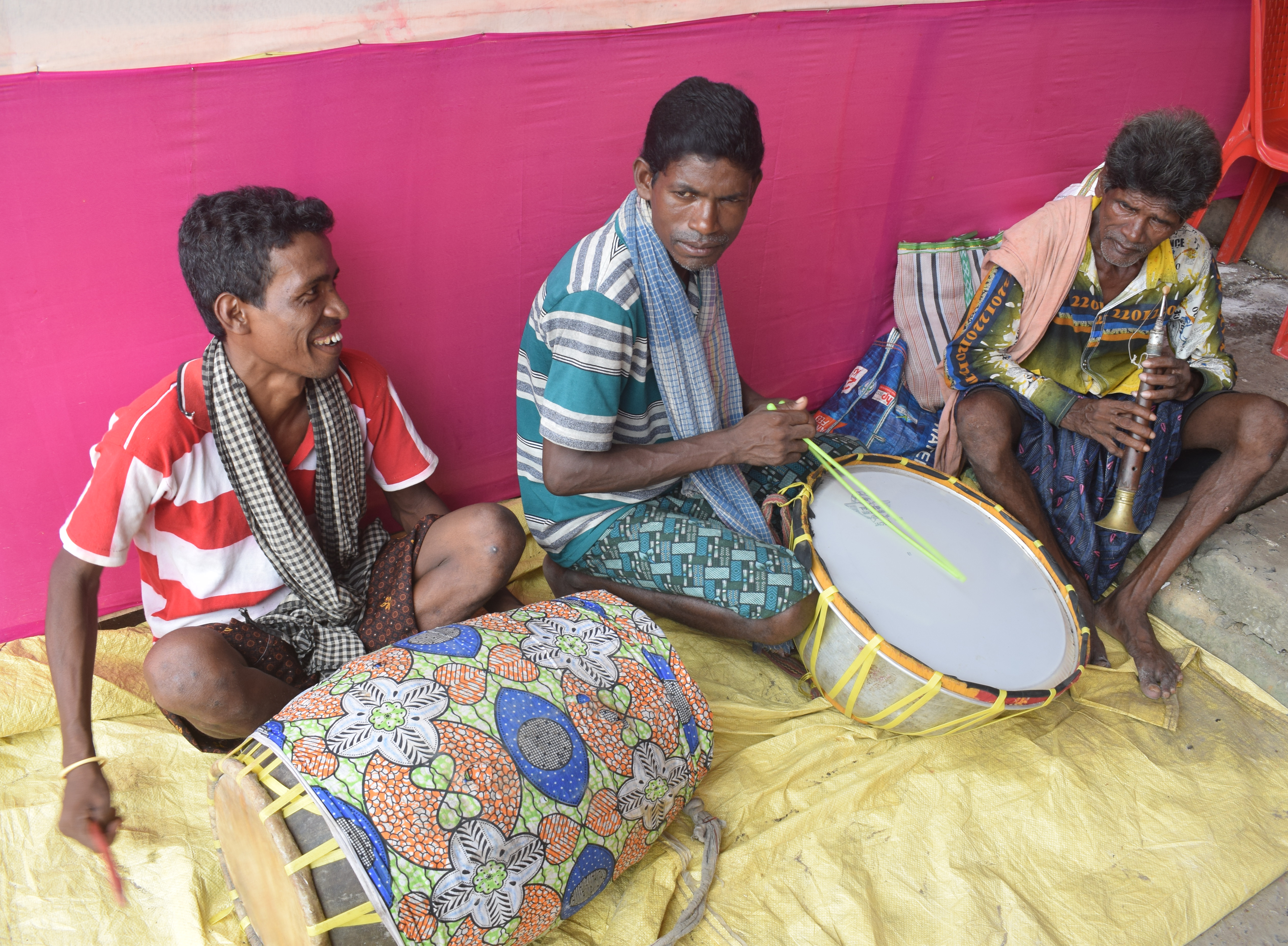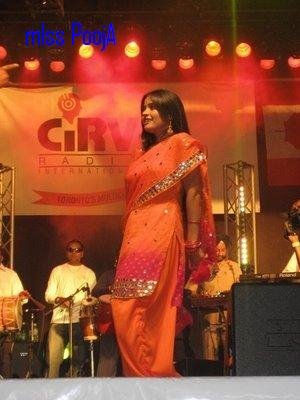|
Dholak
The ''dholak'' is a two-headed hand drum, a folk percussion instrument. The dholak is most commonly recognised in countries such as India, Pakistan, Bangladesh, Nepal and Sri Lanka, but can also be found amongst the Indo-Diaspora in countries such as Guyana, Suriname, Fiji, Trinidad and Tobago, South Africa and Mauritius. The dholak can be anywhere about 16" to 24" in length. It is widely used in ''qawwali'', ''kirtan'', ''bhajan'', ''Bhangra (music), bhangra'', ''Chutney music, chutney'', ''Baithak Gana, baithak gana'', ''Hindi film music'', ''lokgeet'' and various classical styles such as ''Hindustani classical music, Hindustani'', ''Carnatic music, Carnatic'' and ''trinidadian local classical / guyanese taan, Trinidadian local classical / Guyanese taan''. The drum has two different sized drumheads. There is a smaller drumhead that can be from 5.5 to 8 inches in diameter and is made for sharp notes while the bigger drumhead, which can be from 7.5 to 10 inches in diametre, is ma ... [...More Info...] [...Related Items...] OR: [Wikipedia] [Google] [Baidu] |
Chutney Music
Chutney music ( Caribbean Hindustani: चटनी संगीत, 𑂒𑂗𑂢𑂲 𑂮𑂑𑂹𑂏𑂲𑂞, چٹنی موسیقی) is a genre that blends Hindustani folk music, including Bhojpuri folk traditions, with Caribbean calypso and soca rhythms and later filmi music. Originating in Trinidad and Tobago by Indo-Trinidadians in the mid-20th century, chutney music has reflected the history and experiences of indentured laborers hailing from the Indian subcontinent, particularly from present-day states like Bihar, Uttar Pradesh and Bengal, and their descendants. It is similar to Baithak Gana that originated in the South American nation of Suriname. The term ''chutney'' is derived from the Hindi word '' chatni,'' referring to South Asian condiments made of spices. Before the emergence of Caribbean Hindustani, early chutney music often featured lyrics sung in Hindi, Bhojpuri, Awadhi or other Indian languages, blended in with West Indian Creole and Caribbean E ... [...More Info...] [...Related Items...] OR: [Wikipedia] [Google] [Baidu] |
Qawwali
Qawwali is a form of Sufi Islamic devotional singing originating in the Indian subcontinent. Originally performed at Sufi shrines throughout the Indian subcontinent, it is famous throughout Pakistan, India, Bangladesh and Afghanistan and has also gained mainstream popularity and an international audience as of the late 20th century. While hereditary performers continue to perform Qawwali music in traditional and devotional contexts, Qawwali has received international exposure through the work of Nusrat Fateh Ali Khan, Aziz Mian and Sabri Brothers largely due to several releases on the Real World label, followed by live appearances at WOMAD festivals. Other famous Qawwali singers include Fareed Ayaz & Abu Muhammad Duo, Abdullah Manzoor Niazi, Rahat Fateh Ali Khan, Badar Miandad, Rizwan-Muazzam Duo, Qutbi Brothers, the late Amjad Sabri, Qawwal Bahauddin Qutbuddin, Najm Saif and Brothers, Aziz Naza, among others. Out of these Fareed Ayaz & Abu Muhammad Duo, Abdulla ... [...More Info...] [...Related Items...] OR: [Wikipedia] [Google] [Baidu] |
Baithak Gana
Baithak Gana ( Sarnami: बैठक गाना, بیتک گانا) is a form of music originating in Suriname by the Indo-Surinamese community. Baithak is a social gathering. It is a mix of Hindustani folk music with other Caribbean influences. It is similar to Chutney music that originated in Trinidad and Tobago. The most popular exponent in Surinam of the genre were Ramdew Chaitoe and Dropati. Instruments In basic Baithak Gana there are three instruments, harmonium, dholak and the dhantal. The harmonium is a free-standing keyboard instrument similar to a reed organ. The dholak is a double headed drum that originated in Northern India, however, it is still used in the folk songs from Pakistan or Nepal. The last instrument that is used in this style of music is the dhantal which serves as the rhythmic piece of the ensemble, it consists of a long steel rod which is then "struck" by a U-formed piece, the origin of this device is unclear, as it may have been brought by the ... [...More Info...] [...Related Items...] OR: [Wikipedia] [Google] [Baidu] |
Chutney-soca
In Trinidad and Tobago, Guyana, and Suriname, chutney soca music is a crossover style music style that blends soca and calypso with chutney music—a genre rooted in Indo-Trinidadian culture.It incorporates English, Hindustani, and Hinglish lyrics, usingWestern instruments such as the guitar, piano, drum set, and Indian instruments such as the dholak, harmonium, tabla, and dhantal. The term chutney soca was first coined by Drupatee Ramgoonai of Trinidad and Tobago in 1987 in her first album entitled ''Chutney Soca'', with a mix of Trinidadian English and Trinidadian Hindustani versions of the songs. The current style of spelling of the term was not established then and she spelt it as "Chatnee Soca". The following year her hit "Roll up de Tassa" was instrumental in creating a commercial market for this type of music internationally. Drupatee has spoken about the blending of Afro and Indo melodies and rhythms in songs such as "Chatnee Soca" and "Hotter than ah Chulha". C ... [...More Info...] [...Related Items...] OR: [Wikipedia] [Google] [Baidu] |
Tabla
A ''tabla'' is a pair of hand drums from the Indian subcontinent. Since the 18th century, it has been the principal percussion instrument in Hindustani classical music, where it may be played solo, as an accompaniment with other instruments and vocals, or as a part of larger ensembles. It is frequently played in popular and folk music performances in India, Bangladesh, Afghanistan, Pakistan, Nepal and Sri Lanka.Tabla Encyclopædia Britannica The tabla is an essential instrument in the bhakti devotional traditions of Hinduism and Sikhism, such as during ''bhajan'' and ''kirtan'' singing. It is one of the main qawwali instruments used by Sufi musicians. The instrument is also featured in dance performances such as Kathak. Tabla is a rhythmic instrument. The word ''tabla'' likely comes from ''tabl'', the Arabic word for drum. [...More Info...] [...Related Items...] OR: [Wikipedia] [Google] [Baidu] |
Bhajan
Bhajan is an Indian term for any devotional song with a religious theme or spiritual ideas, specifically among Dharmic religions, in any language. The term bhajanam (Sanskrit: भजनम्) means ''reverence'' and originates from the root word ''bhaj'' (Sanskrit: भज्), which means ''to revere'', as in 'Bhaja Govindam' (''Revere Govinda'')''. ''The term bhajana also means ''sharing''. The term bhajan is also commonly used to refer to a group event, with one or more lead singers, accompanied with music, and sometimes dancing. Normally, bhajans are accompanied by percussion instruments such as ''tabla'', dholak or a tambourine. Handheld small cymbals (''kartals'') are also commonly used to maintain the beat. A bhajan may be sung in a temple, in a home, under a tree in the open, near a river bank or a place of historic significance.Anna King, John Brockington, ''The Intimate Other: Love Divine in Indic Religions'', Orient Longman 2005, p 179. A group of bhajan performers m ... [...More Info...] [...Related Items...] OR: [Wikipedia] [Google] [Baidu] |
Bhangra (music)
Bhangra () is a type of non-traditional music of Punjab originating from the Punjab region. Over the years, bhangra has evolved and gained popularity not only in South Asia but also around the world. It has become a significant part of the cultural identity of the Punjabi diaspora in countries like Australia, the United Kingdom, Canada, and the United States. Prior to this musical fusion, bhangra existed only as a Bhangra (dance), dance form in the native Punjab. This Punjabi music was unique in that it was not traditional nor did it seek any authenticity. While the traditional folk music of Punjab has a set of melodies that are used by various singers, bhangra was a form of strict "band culture" in that new melodies were composed for each song. Therefore, the musicians were as important as the singers. Origins The roots of modern bhangra music date back to the Sikh Punjabi community in Punjab during the 1960s. An early pop music and modern recording group of this type of mu ... [...More Info...] [...Related Items...] OR: [Wikipedia] [Google] [Baidu] |
Dhol
Dhol () can refer to any one of a number of similar types of double-headed drum widely used, with regional variations, throughout the Indian subcontinent. Its range of distribution in Indian subcontinent primarily includes northern areas such as the Jammu division, Jammu, Himachal Pradesh, Himachal, Punjab region, Punjab, Haryana, Delhi, Kashmir, Sindh, Assam Valley, Uttarakhand, West Bengal, Odisha, Gujarat, Maharashtra, Konkan, Goa, Karnataka, Rajasthan, Bihar, Jharkhand and Uttar Pradesh. A related instrument is the dholak or dholki. ''Dhols'' are amongst other events used in Indian wedding ceremony processions such as Baraat or ''Varyatra''. Someone who plays the dhol is known as ''dholi''. Etymology The word Dhol is derived from Sanskrit word ''ḍhola,'' a term for drum in Sanskrit language. Construction The dhol is a double-sided barrel drum played mostly as an accompanying instrument in regional music forms. In Qawwali music, the term ''dhol'' is used to describe ... [...More Info...] [...Related Items...] OR: [Wikipedia] [Google] [Baidu] |
Barrel Drum
Barrel drums are a class of membranophone, or drum, characterized by a barrel-shape with a bulge in the middle. They can be one-headed and open at the bottom, or two-headed at opposite ends. Examples include the Vietnamese ''trong chau'' and the ''bendre'' of the Mossi of Burkina Faso. Barrel drums * Buk – Korea *Conga – Cuba * Dhak – India *Dhol – India *Dholak – North India, Pakistan, and Nepal * Geta beraya – Sri Lanka * Glong khaek – Thailand * Glong songna – Thailand * Glong thad – Thailand * Kebero – Ethiopia *Kendhang – Indonesia *Khol – India *Mridangam The ''mridangam'' is an ancient percussion instrument originating from the Indian subcontinent. It is the primary rhythmic accompaniment in a Carnatic music ensemble. In Dhrupad, a modified version, the pakhawaj, is the primary percussion in ... – South India * Pakhawaj – North India * Sampho – Cambodia * Tanbou – Haiti * Tanggu – China * Taphon – Thailand * Trống chầu – Vi ... [...More Info...] [...Related Items...] OR: [Wikipedia] [Google] [Baidu] |
Indian Folk Music
Indian folk music is diverse because of India's enormous cultural and traditional diversity. It is sung in various languages and dialects throughout the length and breadth of this vast nation and exported to different parts of the world owing to migration. Chawtal Chawtal or Chowtal, aside from being the name of a " taal"/"''tala''" or meter in Hindustani classical music, is a form of folklore song of North India's Bhojpuri region, sung by its native people during the Phagwa or ''Holi'' festival. Tamang Selo Tamang Selo is a musical genre of the Tamang people and widely popular amongst the Nepali speaking community in India and around the world. It is usually accompanied by Tamang instruments, the Damphu, Madal and Tungna. although modern instruments have found their way into the compositions these days A Selo could be very catchy, attractive and lively or slow and melodious and is usually sung to express love, sorrow and stories of day-to-day life. Hira Devi Waiba i ... [...More Info...] [...Related Items...] OR: [Wikipedia] [Google] [Baidu] |
Filmi
Filmi () music soundtracks are music produced for India's mainstream motion picture industry and written and performed for Cinema of India, Indian cinema. In cinema, List of Indian film music directors, music directors make up the main body of composers; the songs are performed by playback singers and the genre represents 72% of the music sales market in India. Filmi music tends to have appeal across India, Nepal, Pakistan and overseas, especially among the Non-resident Indian and person of Indian origin, Indian diaspora. Songs are often in different languages depending on the target audience, for example in Hindi or Tamil. Playback singers are usually more noted for their ability to sing rather than their charisma as performers. Filmi playback singers' level of success and appeal is tied to their involvement with film soundtracks of cinema releases with the highest box office ratings. At the "Filmi Melody: Song and Dance in Indian Cinema" archive presentation at UCLA, filmi was ... [...More Info...] [...Related Items...] OR: [Wikipedia] [Google] [Baidu] |







